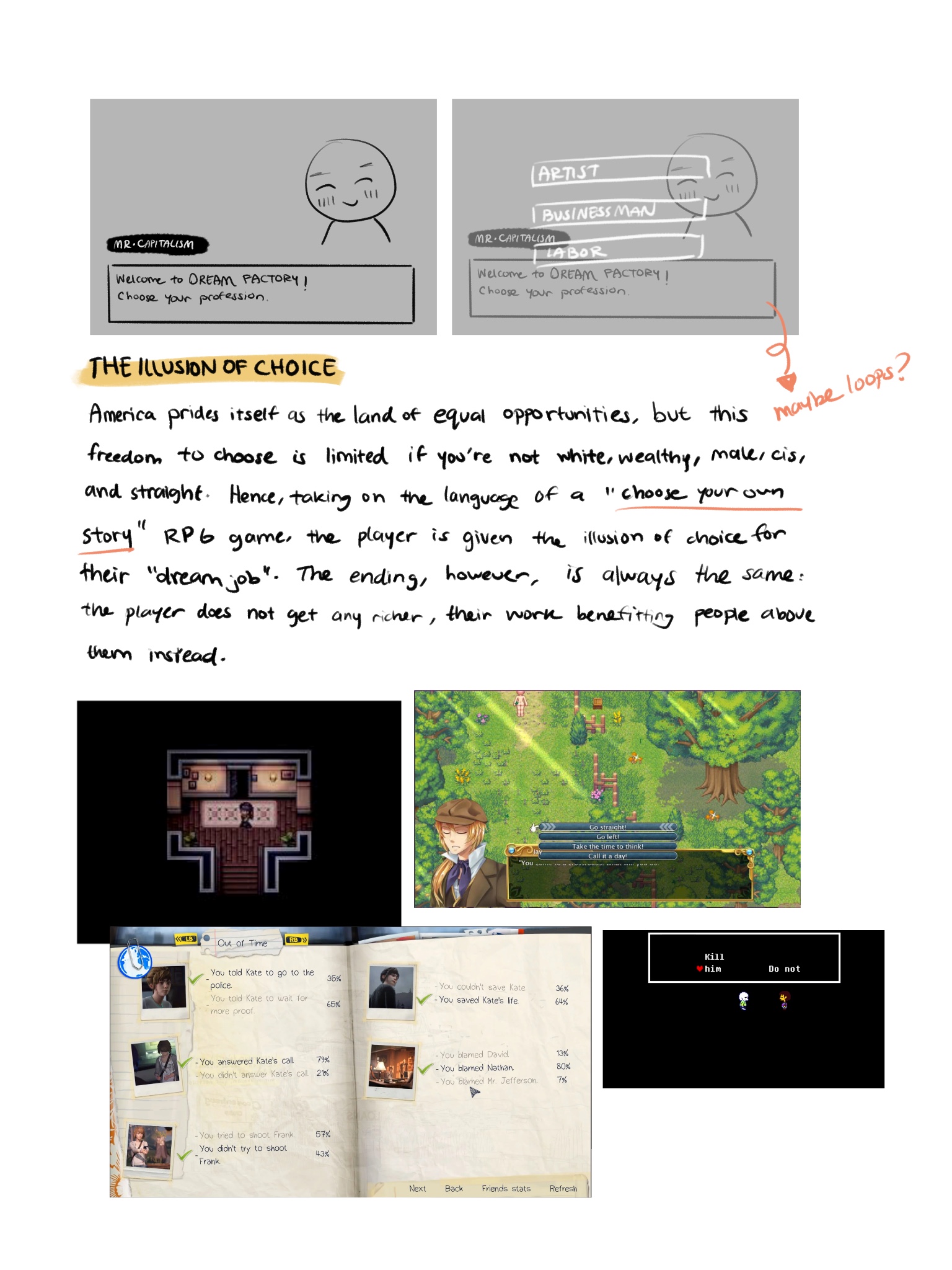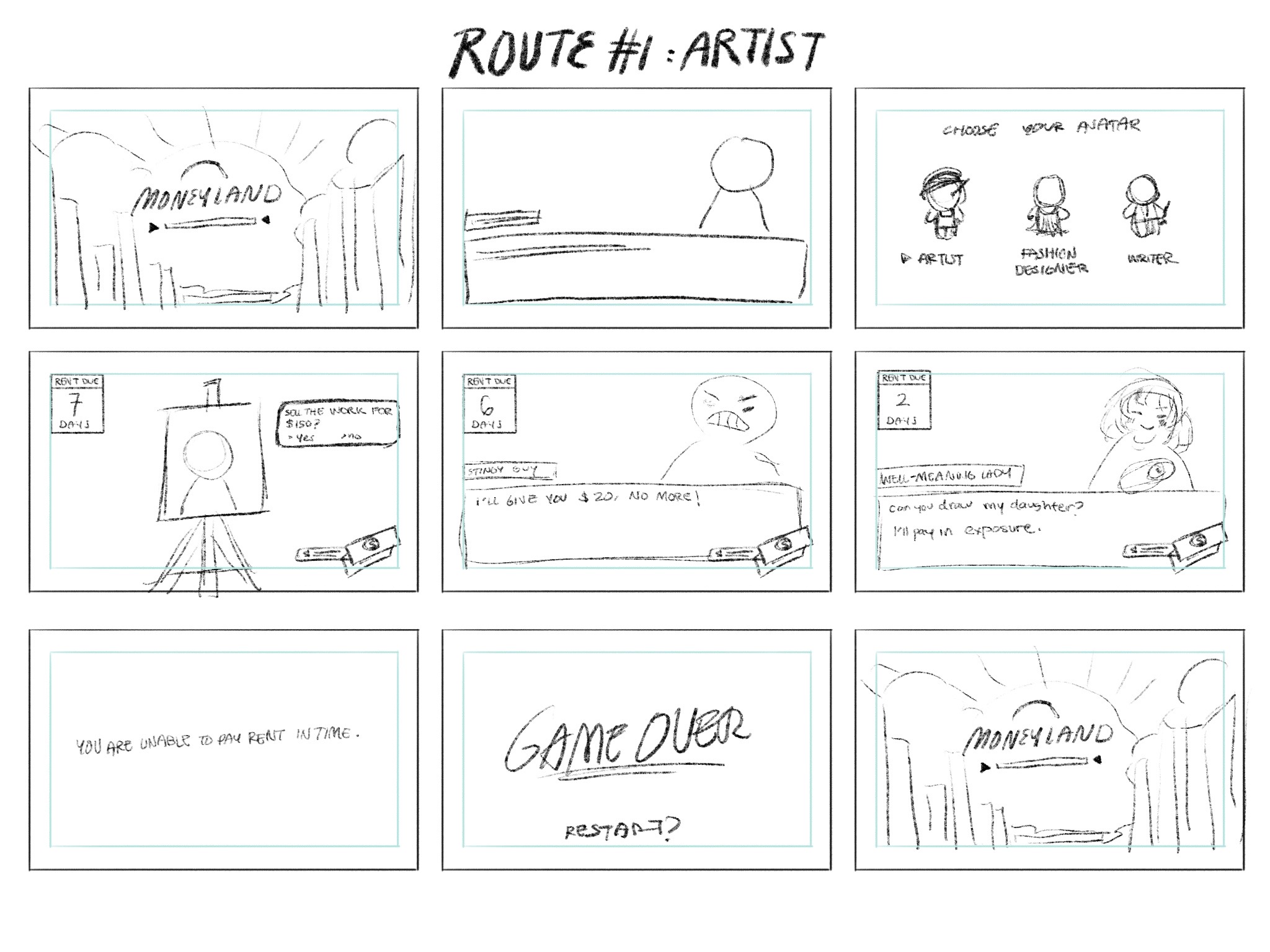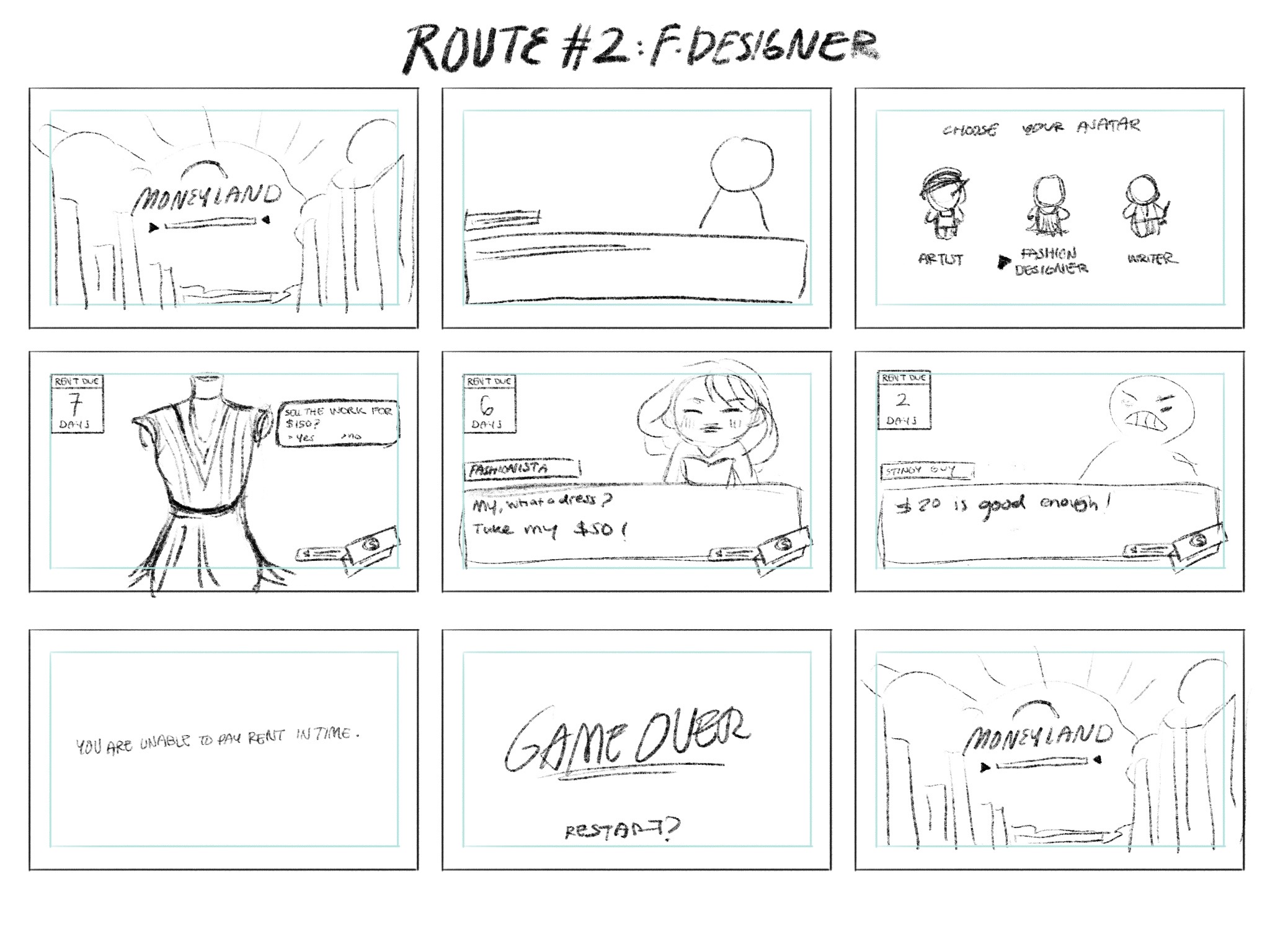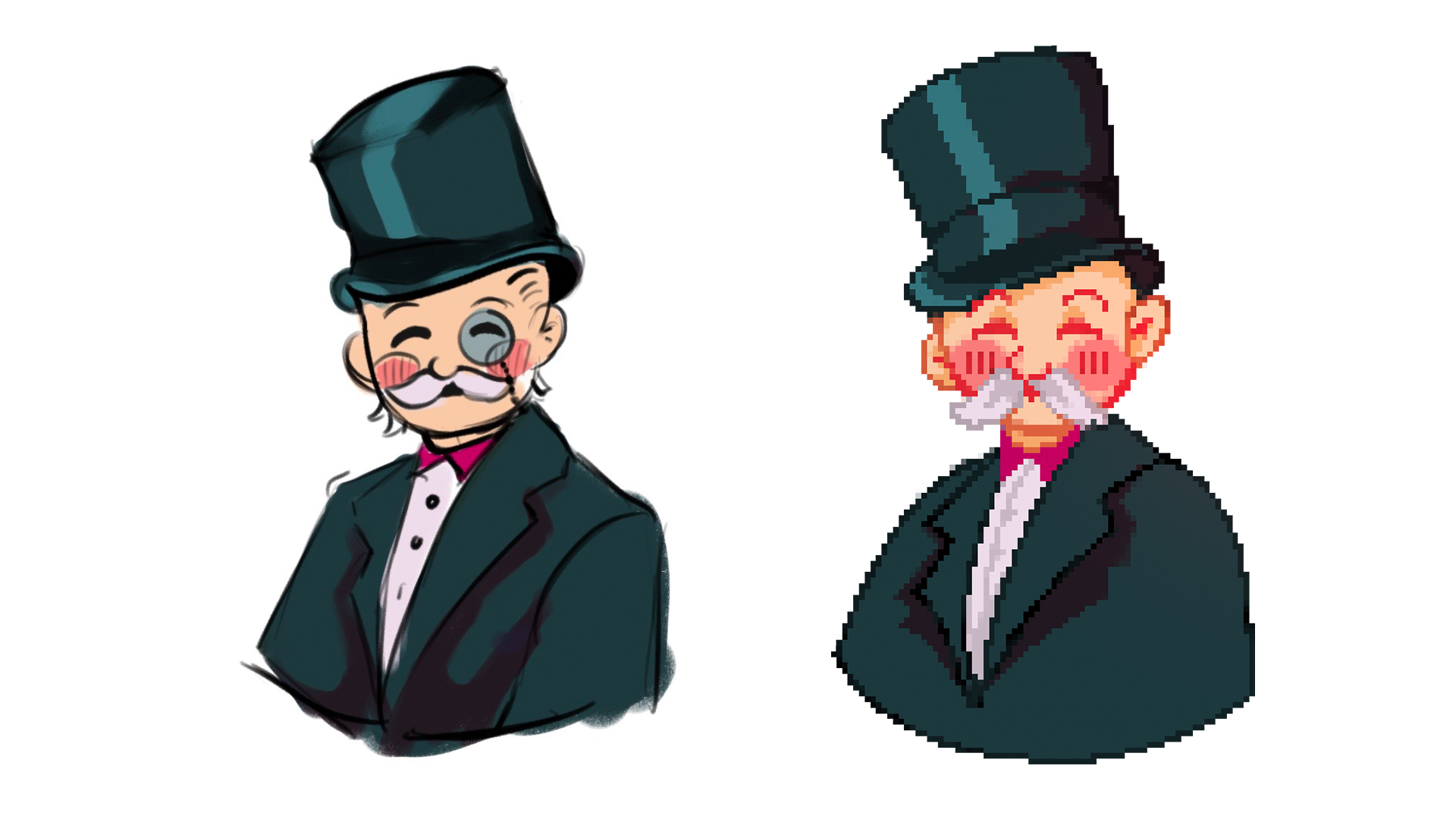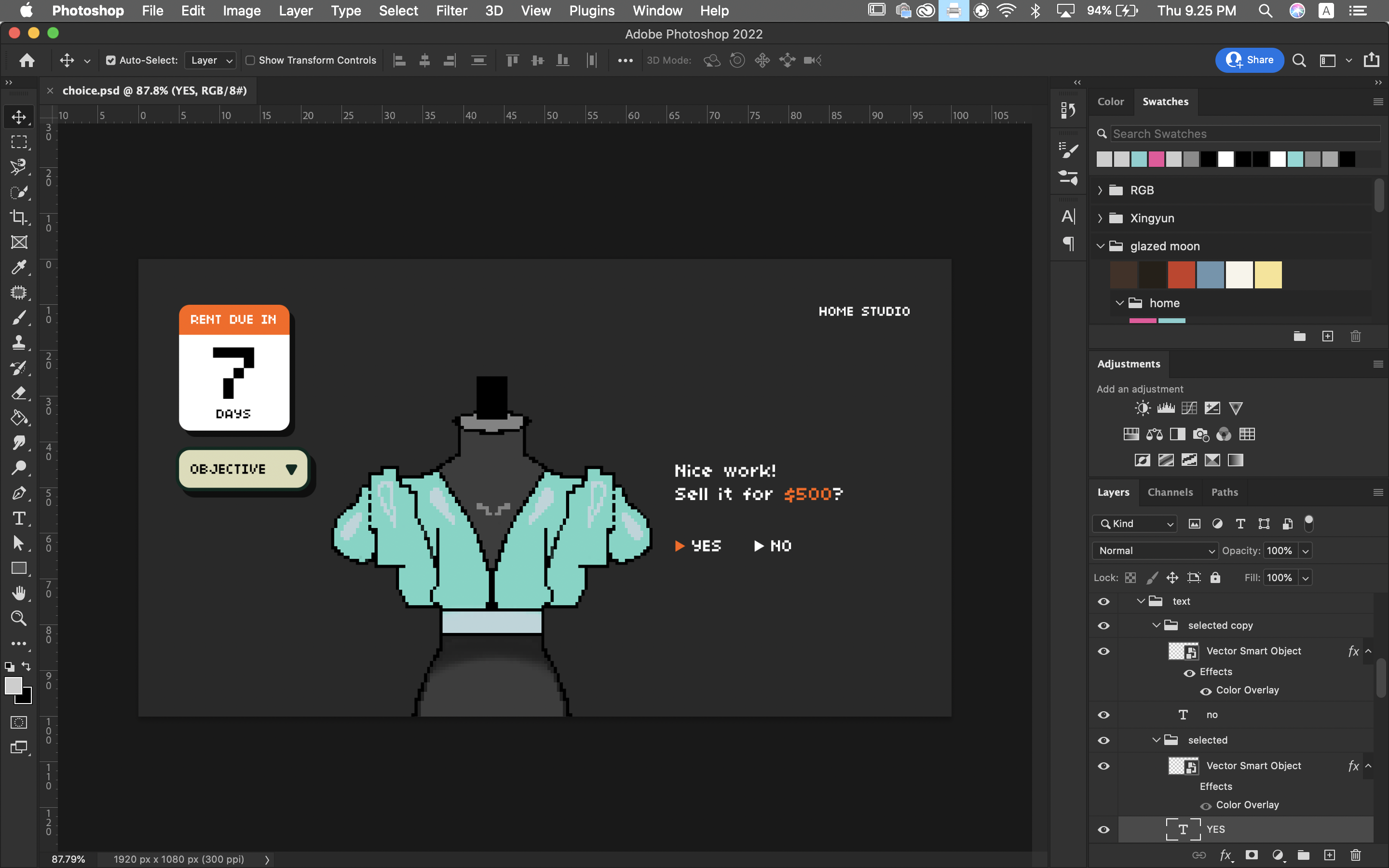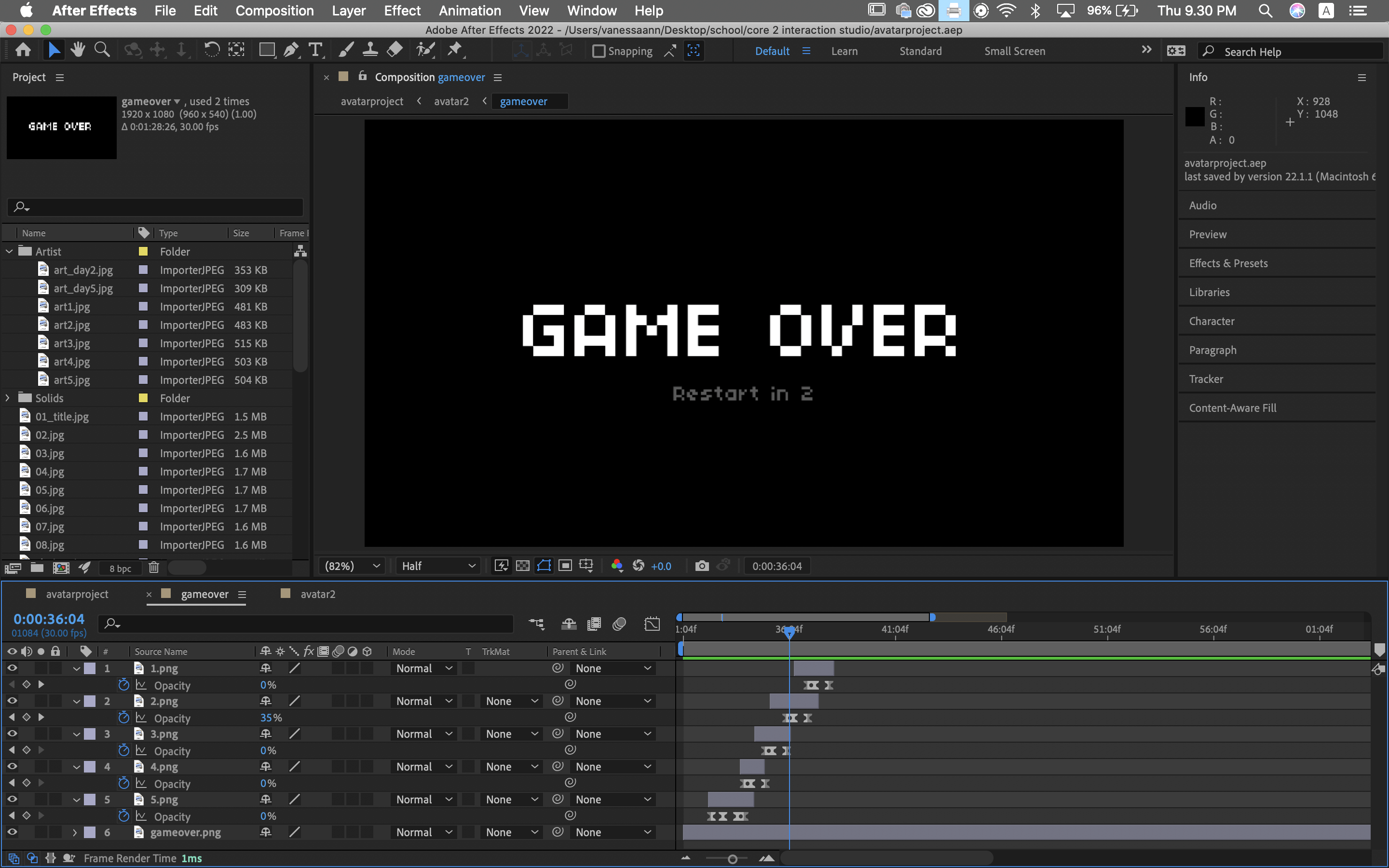After brainstorming about my internet history, I realized that much of my online existence relies on my ability to create—whether that means being an artist, designer, writer, or more. Ever since I was younger, the idea of capitalizing on my hobbies was encouraged by both my parents and the internet. However, as I grew older, I realized that there are many downsides to this seemingly perfect idea such as burnout, competition, and an overall lack of support. This then leads to exploitation of people in the creative industry, which is something that I'm deeply concerned about.
Using the language of RPG Maker games I was fond of, I created a game mock-up with a "choose your own story format", where the player is presented with different options that nevertheless lead to the same desolate resolution. The game name and setting is Moneyland, a place advertised as "where dreams come true." The player is encouraged to pursue a creative career (artist or fashion designer) and the single objective is to pay their weekly rent in time. Over the course of a week, however, the player finds that their creativity does not translate into monetary value. Eventually, the player fails to pay rent in time—game over. The fictional world of Moneyland parallels that of the real, capitalistic world that constantly perpetuates the illusion of choice without acknowledging the privilege underlining the terms and conditions of success.
